In 2014 the Medical Center Expansion project, the largest expansion project in OSU’s history, which included the new home of the Comprehensive Cancer Center – James Cancer Hospital and Solove Research Institute and a new Critical Care Center, was completed.
Category: The Ohio State University (page 1 of 5)
The College of Dentistry seal in an “O” with the open book and buckeye leaf with are part of the University seal. The open book signifies education and the buckeye leaf is representative of the Ohio State University. The “O” also represents the Greek letter Omicron which the first letter of the word Odont, meaning tooth.
The triangle, representing the Greek letter Delta, together with the cautery and the branches with the leaves and berries represent the dental profession. The leaves represent the 32 teeth in the permanent dentition and the berries represent the 20 teeth in the primary dentition.
The overlapping of the triangle and the circle represent the joining of dentistry and education.
In 1915, the International Dental Federation asked and was granted permission to erect the first campus statue of Dr. Willoughby D. Miller (1853 – 1907). Dr. Miller discovered how and why teeth decay.
The OSU Board of Trustees fixed the temporary location of the statue southwest of the Thompson Library building – it was moved to its present home beside Postle Hall when the building was complete.
The bronze statue is the work of Frederick C. Hibbard, a sculptor from Chicago and costs $5000. It was unveiled December 8, 1915 in the presence of 300 dentists attending the annual meeting of the Ohio Dental Society. Miss Anna Miller of Alexandria, a grandniece of Dr. Miller, performed the act of unveiling.
On the base of the statue is the following inscription: Erected to the Memory of Willoughby Dayton Miller, 1853-1907, Dental scientist and education, Benefactor of his profession, Friend of humanity, a native of Ohio, a citizen of the world, by the dentists of the United States, December 8, 1915.
The 1950s marked a time of expansion for departments in the OSU College of Medicine with five beginning the Division of Rheumatology and Immunology (1950 as Arthritis and Rheumatic Diseases); the Department of Physical Medicine and Rehabilitation (1951); the Department of Psychiatry (1951); the Department of Plastic Surgery (1952); and, the Department of Urology (1952 formally, but began in 1917 informally).
The 1940s marked a time of expansion for departments in the OSU College of Medicine with four beginning the Division of Gastroenterology, Hepatology and Nutrition (1945); the Department of Radiology (1947); the Division of Anesthesiology (1947, informally since 1914 developing alongside Surgery); and, the Division of Endocrinology, Diabetes & Metabolism (1949).
In 1926 as part of a series of studies on professional education in the United States funded by the Carnegie Foundation for the Advancement of Teaching, Dr. William Gies published a landmark report, Dental Education in the United States and Canada, that established the importance of dentistry as a healing science and an essential component of higher education in the health professions. The report took five years to research and write and included lengthy descriptions and evaluations of the existing dental schools, each of which Dr. Gies visited.
http://www.adea.org/ADEAGiesFoundation/William-J-Gies-and-Gies-Report.aspx
Nursing Leadership at OSU, 1914 – 2014*
1915-1917: Jessie F. M. Harrod, Superintendent
1917-1922: Gertrude A. Loessel, Principal
1922: Ida G. Webb, Superintendent
1923-1928: Lucy V. Ailer, Superintendent
1928-1929: Lucy V. Ailer, Principal
1929-1930: Margaret Reilly, Principal
1930-1931: Margaret G. Napier, Principal
1931-1933: Alpha Louis Johnson, Director
1933-1938: Ruth Perkins Kuehn, Director
1938-1941: Priscilla Hall, Director
1941-1951: Frances M. McKenna, Director
1951-1968: Mildred E. Newton, Director
1968-1972: Imogene M. King, Director
1972-1973: Lorane C. Kruse, Acting Director
1973-1983: Edna L. Fritz, Director
1983-1984: Kathryn T. Schoen, Acting Dean
1984-1986: Grayce M. Sills, Acting Dean
1986-2001: Carole A. Anderson, Dean
2001-2011: Elizabeth R. Lenz, Dean
2011-: Bernadette M. Melnyk, Dean
*Please note that this is the most accurate listing that could be found piecing together multiple sources, but the leaders and their titles prior to 1931 may not be 100 percent accurate. If you have any source information to share about the leadership between 1914 and 1931, please contact us.
- Jessie Harrod
- Gertrude Loessel
- Ruth Perkins Kuehn
- Priscilla Hall
- Frances McKenna
- Mildred Newton
- Imogene M. King
- Lorane C. Kruse
- Edna Fritz
- Kathryn Schoen
- Grayce Sills
- Carole Anderson
- Elizabeth Lenz
- Bernadette Melnyk
Harding Hospital located in Worthington, Ohio was a non-profit organization founded in 1916 by George T. Harding II, MD. The hospital specialized in psychiatric care. As such, Harding had a diverse payroll that ranged from psychiatrists and therapists, to social workers and ministers in training. Harding offered inpatient, outpatient, halfway house, family care, individual psychotherapy, milieu therapy and group therapy services. In 1999 Ohio State and Harding Hospital united their services and moved the hospital facility to the OSU campus in Columbus. Today, OSU Harding Hospital offers the only academic program in central Ohio providing child, adolescent, adult and geriatric inpatient services.
The Medical Heritage Center has an archival collection about the original Harding Hospital and the finding aid for it can be viewed at https://hsl.osu.edu/mhc/pdf/harding-hospital-collection
Dr. Arthur G. James (1912-2001) believed all cancer would eventually be eradicated. That belief coupled with his dedication to the idea that cancer patients needed separate, specialized care, led him to lobby, campaign, and fundraise for thirty-five years to build a cancer hospital in Ohio. The Arthur G. James Cancer Hospital and Research Institute opened at Ohio State on July 9, 1990 when it admitted its first patient. At the time of its construction, only three hospitals – Roswell Park in Buffalo, New York; M.D. Anderson in Houston, Texas; and Memorial Sloan-Kettering in New York City – had comparable resources. After a gift of $20 million from Richard J. Solove in 1999, the facility was renamed the Arthur G. James Cancer Hospital and Richard J. Solove Research Institute, but is commonly referred to as the James. The facility remains the only freestanding cancer hospital in Ohio to this day.
A book written by George Paulson and Kristin Rodgers titled Arthur G. James Surgeon with a Dream is for sale by the Medical Heritage Center for $25 plus applicable sales tax. [link to: https://hsl.osu.edu/service-areas/mhc/services/publications-sale] This publication is primarily based on Dr. James’s archival collection and the finding aid for that can be viewed at https://hsl.osu.edu/mhc/pdf/arthur-g-james-md-collection
Paul Tennyson Williams (1925- ) had his own medical practice in Delaware, Ohio until 1974. In 1974 academic family medicine was initiated at Ohio State as a division of the Department of Preventive Medicine and Williams is recruited and appointed Professor and Chair. Under Williams’ leadership in 1974, the Division of Family Medicine received full accreditation for its Family Practice Residency Program, the first university-based family practice residency program in Ohio.
The Medical Heritage Center has an archival collection about Dr. Williams and the finding aid for that can be viewed at https://hsl.osu.edu/mhc/pdf/p-tennyson-williams-md-collection


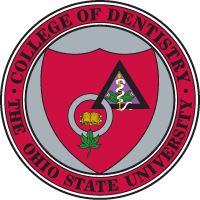



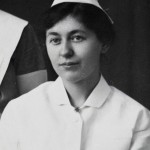
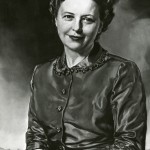
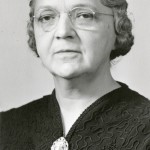
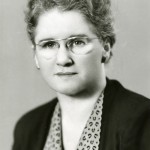
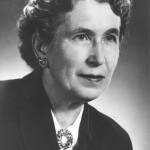

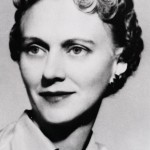

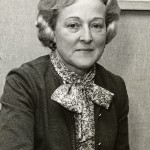
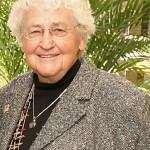
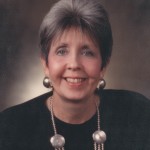
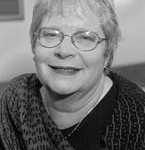


Recent Comments